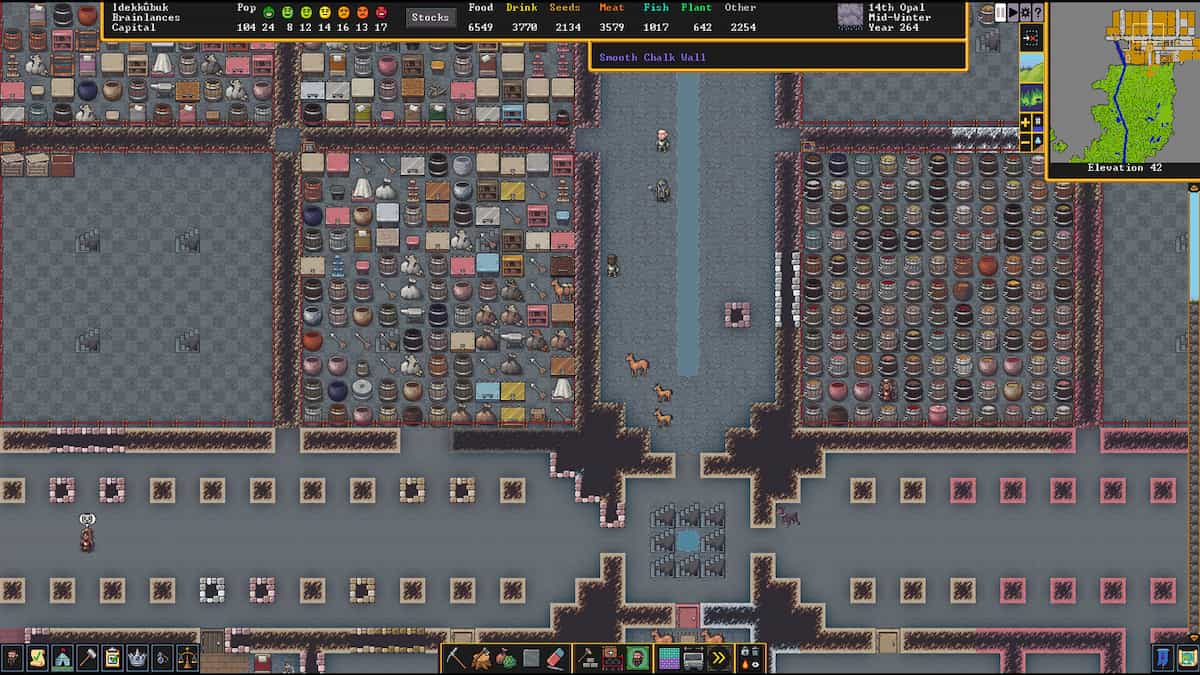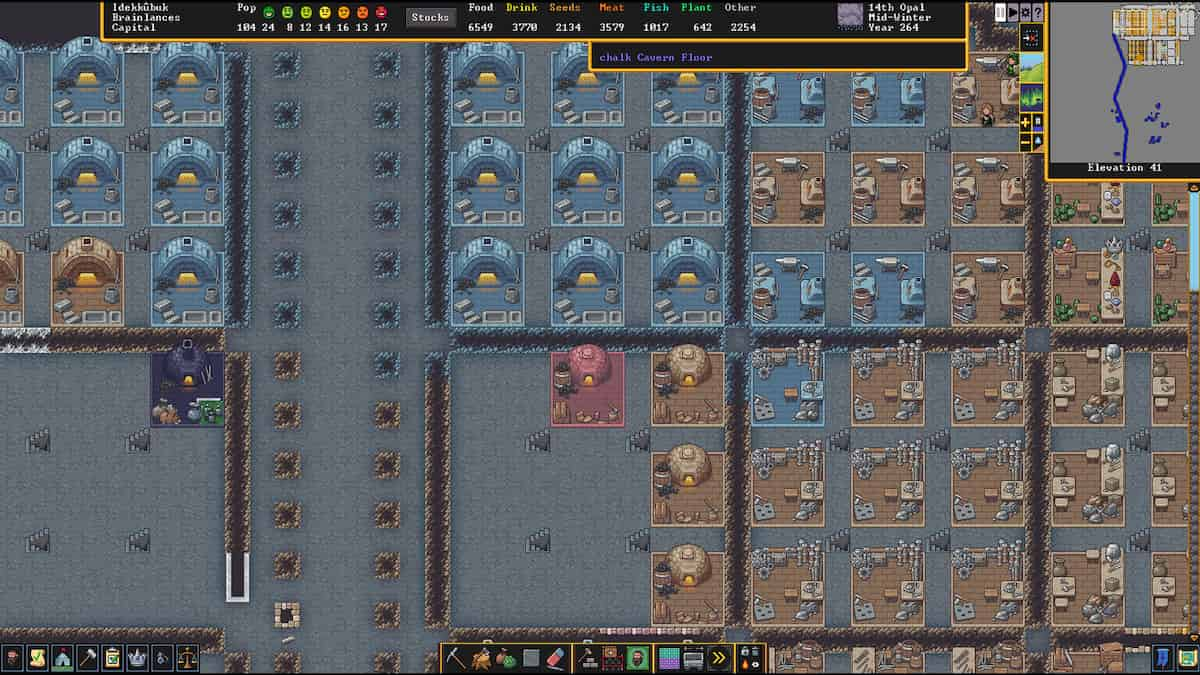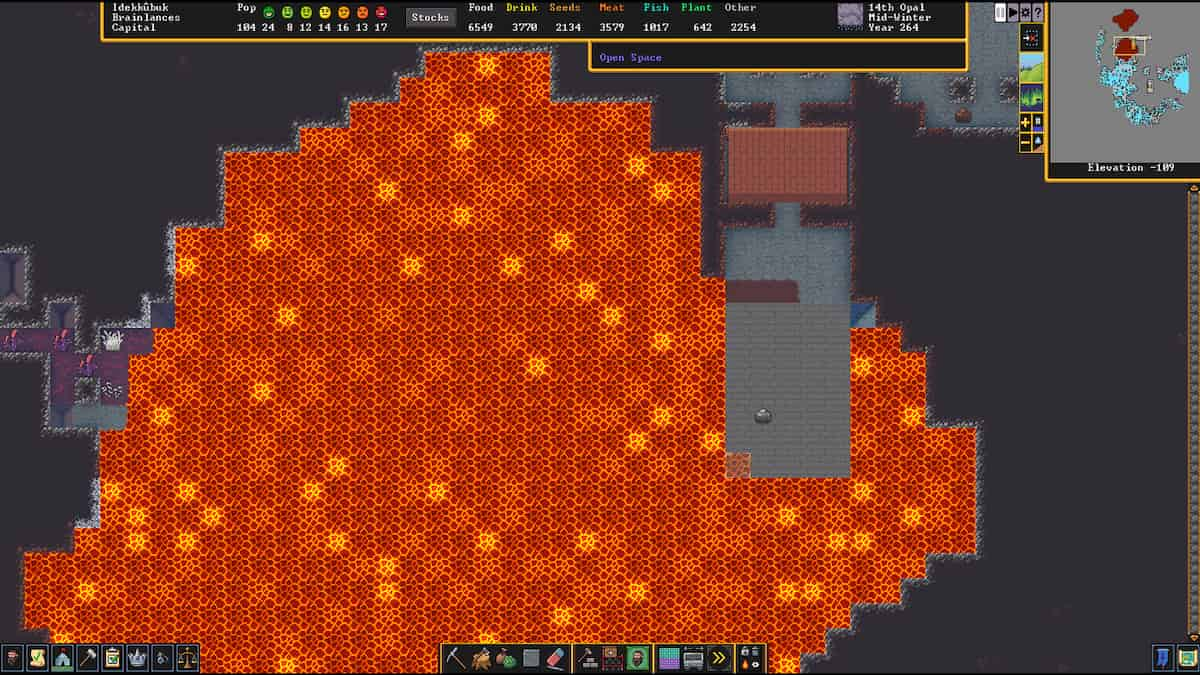Screenshot from MyFullGames
When you start out in Dwarf Fortress, the dwarves are clothed, but largely without gear. It’s too expensive to ship with full sets of armor and weapons for everyone, which is why it’s crucial to set up your metal industry and set it up quickly. Here is our guide on the best and most efficient method to start metalworking and foundry in Dwarf Fortress.
Setting up your metal industry in Dwarf Fortress

The complete metal fabrication process at Dwarf Fortress is as follows:
- mine or trade raw metal either mineral
- Smelt the raw material
- Create metal bars
- Smith the metal bars into weapons, armor and other materials in blacksmith forge
Unless you shipped with some coal or coke, you’ll need some of this to start your process. Charcoal can be made from wood and does not require you to do anything extra. The coke will need a base fuel (coal or coke) to convert the bituminous coal or lignite into a usable form. It’s best to build and maintain at least one wood-fired oven in case you run out of coke.
You will also need a anvil for his first goldsmith’s forge. You can ship with an anvil, which is a bit expensive, or change it when the first trade caravans start. Since it will probably take a few in-game months to set up the smithy correctly, we suggest starting without the anvil.
Related: How to start a new fortress in Dwarf Fortress
Best Design for Blacksmithing.

The best and most efficient blacksmith designs will make intelligent use of z-levels. For example, it takes a dwarf a long time to move long distances with unsmelted ores and metal bars, because they are heavy. Therefore, reducing that distance to the fewest number of tiles is the most effective. This can be done effectively by making a metal industry tower. The levels go something like this:
- Ore Reserve (Custom Stone Reserve with non-economic stone ignored)
- Smelter
- Stack of bars/blocks
- blacksmith forge
- Weapons/Armor/Ammo Arsenals
Because a dwarf moves up and down a ladder at the same speed as the horizontal, this means that dwarves assigned to foundry and goldsmithing have to move the shortest distance possible to get the materials they need. Coke and coal will also be stored in the stockpile of rods/blocks, so both foundries and the metallurgical forge will have easy access to fuel.
Related: Dwarf Fortress Farming for Beginners
Steelmaking at Dwarf Fortress
While most metals will only need their raw ore and some fuel to be smelted, steel has an extra step and material requirement. You will need a flux stone, such as limestone, calcite, chalk, dolomite, or marble. These will be used to create both pig iron, which is an ingredient in steel, and the steel itself. The full ingredients for steel in Dwarf Fortress are below:
- an iron bar
- A cast iron bar
- a flow stone
- One unit of fuel (coke, charcoal, or magma)
Magma Smithy in Dwarf Fortress

When you start building furnaces, you will see that there are Magma versions of each of the workshops. These will need to be placed in an area with at least one open magma space below. The best way to do this is to funnel the magma into a stream and build single spaced floors below. The reason this is not done over an open pool of magma is because things like fire imps and other magma creatures tend to jump out and kill dwarves using magma furnaces.
Magma furnaces and forges will need to be made of magma-safe material, otherwise they will melt. Some of these are obvious (no wood), but don’t assume all stones are magma-safe. Instead, try using stones like granite, gabbro, and obsidian. This applies to all constructions that touch magma, such as doors, walls, and gates.
Finally, magma forging is sometimes more trouble than it’s worth. While it does eliminate the need for fuel such as coke or coal, sudden increases in magma levels, creatures, fire hazards, and other elements can make it simply too dangerous. Sometimes it’s better to stick with normal smithing.
For more Dwarf Fortress guides and information, check out Now You Can Switch Between Classic and Premium Graphics in Dwarf Fortress in MyFullGames.